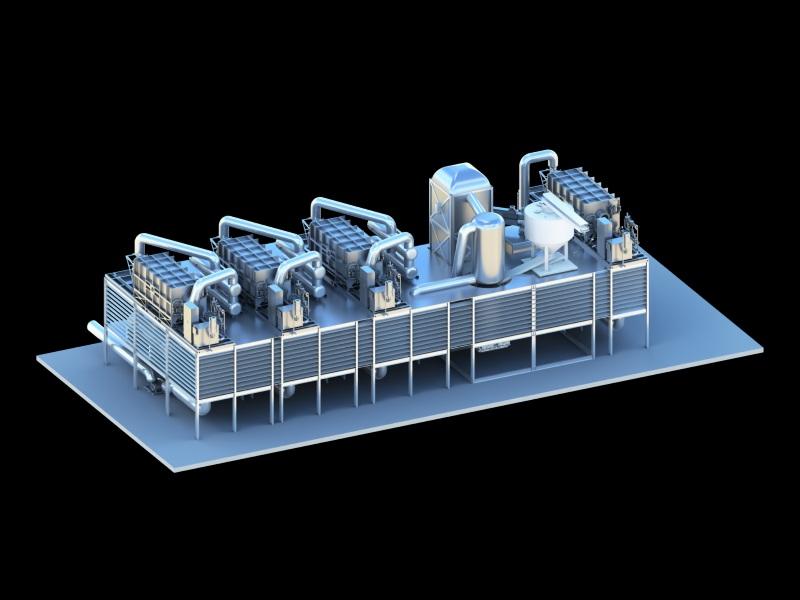
Quebec-based Cecobois has launched an ambitious campaign to promote wood as a viable, low-carbon material for future construction projects in Quebec.
This initiative - entitled Construction bas carbon avec le bois (Low-carbon construction with wood), or CBCB - encourages the province's architects, engineers and property developers to increase the use of wood in new buildings as part of the effort to decarbonize the built environment.
Cecobois, an independent, non-profit agency funded by the Quebec government, Natural Resources Canada and the wood industry, is committed to accelerating mass timber construction and the corresponding use of wood products.
"We've been working for several years towards encouraging the use of wood from the perspective that it's an eco-friendly product and low-carbon solution for the building sector," Louis Poliquin, director of Cecobois, said in an interview with Sustainable Biz Canada.
"When you build a wood structure it uses at least 30 per cent less carbon than a steel or concrete building and that figure can run as high as 60 to 75 per cent depending on the building . . .
"We're now in the process of building up a comprehensive database to document the substantial carbon reductions that can be achieved and demonstrate that (mass timber construction) is feasible, doable, and how we shouldn't wait any longer to proceed in this direction."
In addition to its green properties, mass timber construction facilitates prefabrication, simplifies the foundation process, largely circumvents the need for reinforced concrete in the load-bearing structures, and provides better thermal insulation.
Parallel to the announcement of the CBCB campaign, Cecobois was also awarded $1.2 million in new funding from the Government of Quebec as part of its Policy on the Integration of Wood in Construction.
Quebec chasing B.C. for leadership in mass timber construction
Second only to B.C. as Canada's leading softwood lumber producer and endowed with vast forest regions, Quebec is ideally positioned to harness wood as a natural, low-carbon renewable resource.
As such, mass timber construction has been gaining traction in Quebec as an alternative to buildings made out of structural steel or reinforced concrete.
"Right now, 36 per cent of one- to three-storey non-residential buildings in Quebec have a wood structure. We are also seeing rapid growth in the market share of wood used in five- and six-storey light frame building construction which now accounts for nearly 50 per cent of the total," Poliquin said.
"We're catching up with B.C. in non-residential and institutional mass timber building construction which stands at over 80 per cent over there . . . We are already seeing in Quebec several new mass timber eight- to 15-storey projects in the design stage right now."
The case for carbon reduction

Mass timber is touted by advocates as the future of sustainable building construction. Typically, this involves the use of cross-laminated timber (CLT) and glued laminated timber (glulam) framing in place of traditional tall building materials such as structural steel and reinforced concrete.
According to a March 2024 USDA Forest Service study published in ScienceDirect, mass timber buildings deliver a lower global warming potential by an estimated range of 39 to 51 per cent compared to similar reinforced concrete buildings, and by 28 to 34 per cent with respect to comparable structural steel buildings.
"Part of the mandate of Cecobois is to provide wood design and education guides to universities as well as professionals. We're also promoting the use of wood to government departments so they can better decarbonize their construction projects with our tools," Poliquin said.
Produced from standard lumber, mass timber embraces a panoply of environmental benefits: the renewability of forests, the ability of wood to sequester carbon and low levels of embodied carbon.
Additionally, off-site prefabrication of mass timber components not only reduces construction time but allows developers to begin offering leases and allowing clients to occupy mass timber buildings while under construction.
"If a project takes less time to build, you can occupy it and sell units more rapidly - these are the benefits developers are increasingly aware of," Poliquin said.
"We have already demonstrated the potential for (MT) construction with the 12-storey Origine timber condominium tower in Quebec City, which was the tallest wood frame building in North America when it was built in 2017 . . . We changed the building code for that project. Soon we will be adopting a new code allowing for 18-storey (wood frame) towers in Quebec, as Ontario and B.C. have already done."
The landmark Origine project was supplied by Quebec-based Nordic Structures, one of the largest CLT and glulam manufacturers in North America, which has been expanding capacity at its factory in Chibougamau, located in Quebec's far north.
Tariffs could boost circular wood economy
Today the U.S. imports approximately 50 per cent of Quebec's softwood lumber output. Should Donald Trump's administration carry out its threat of imposing an additional 25 per cent tariff on Quebec lumber, this could spur the province to develop a more local, circular wood construction economy. The tariff threat also adds a sense of urgency to Cecobois's mission.
"With the threat of additional tariffs, everybody in the industry is looking at using more local product. If we were to use more wood in our construction industry, it would mean exporting less to the U.S., doing more secondary manufacturing and processing over here, and creating more value and jobs," Poliquin said.
"And by utilizing more local wood in our construction, we have the opportunity to tackle three crises at once: tariffs, the lack of housing and climate change."
EDITOR'S NOTE: A clarification has been added to a quote from Poliquin which had been incorrectly paraphrased.










